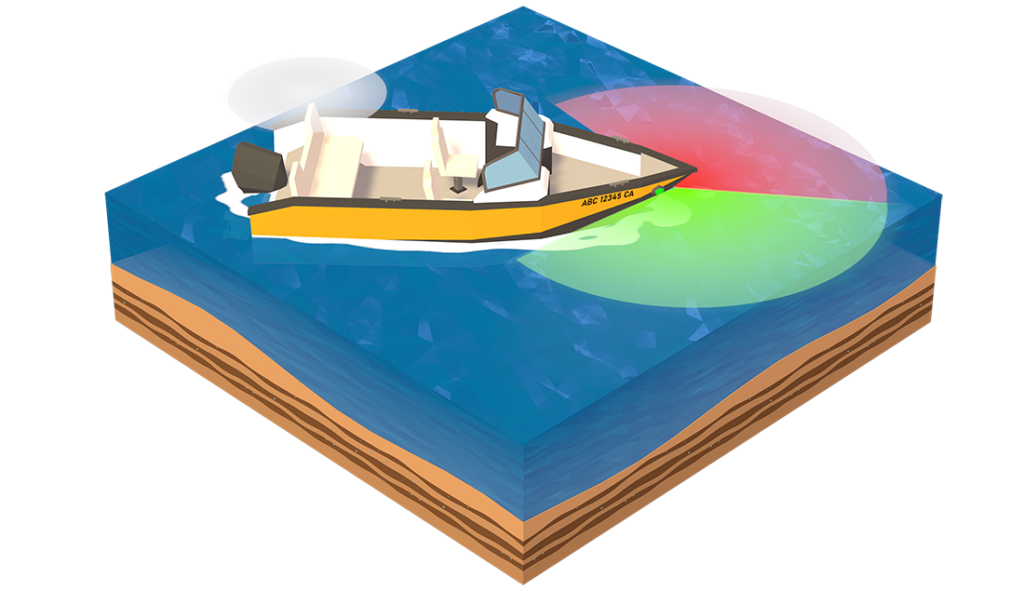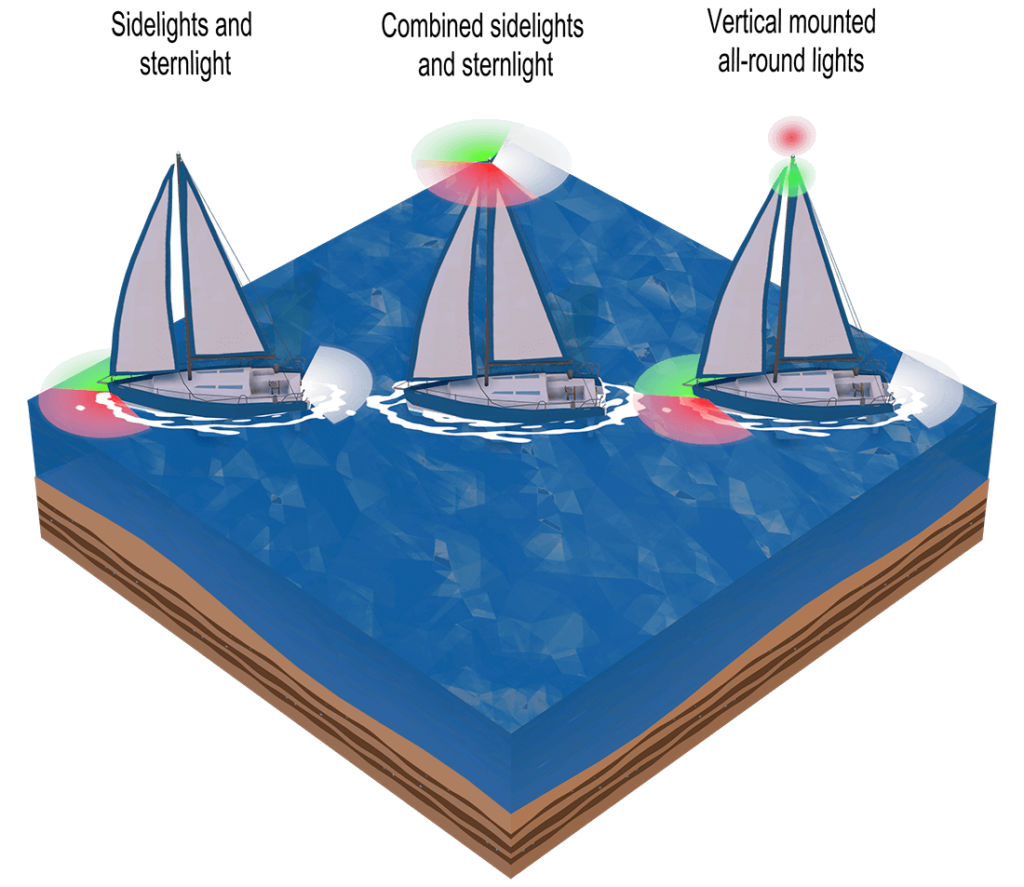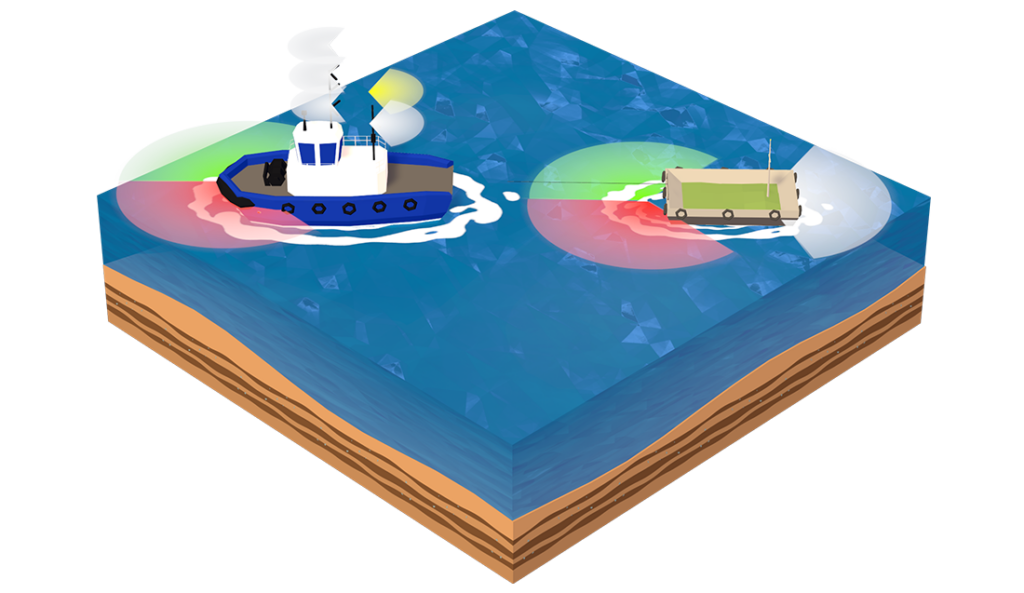Navigation lights on watercraft tell us a vessel is there and the side from which it’s approaching. They allow operators to determine which vessel has the right of way, so they can act accordingly. Lights can also help us to determine what type of boat is present, how large it is, and it’s direction. They can also tell us what the other boat is doing (i.e. towing etc.).
Lights should also be used in times of restricted visibility (i.e. fog, heavy rainstorms etc.). You should check your lights regularly to ensure they are in good working order and replace any bad bulbs as needed. They must also be visible at appropriate distances based on the length of the vessel.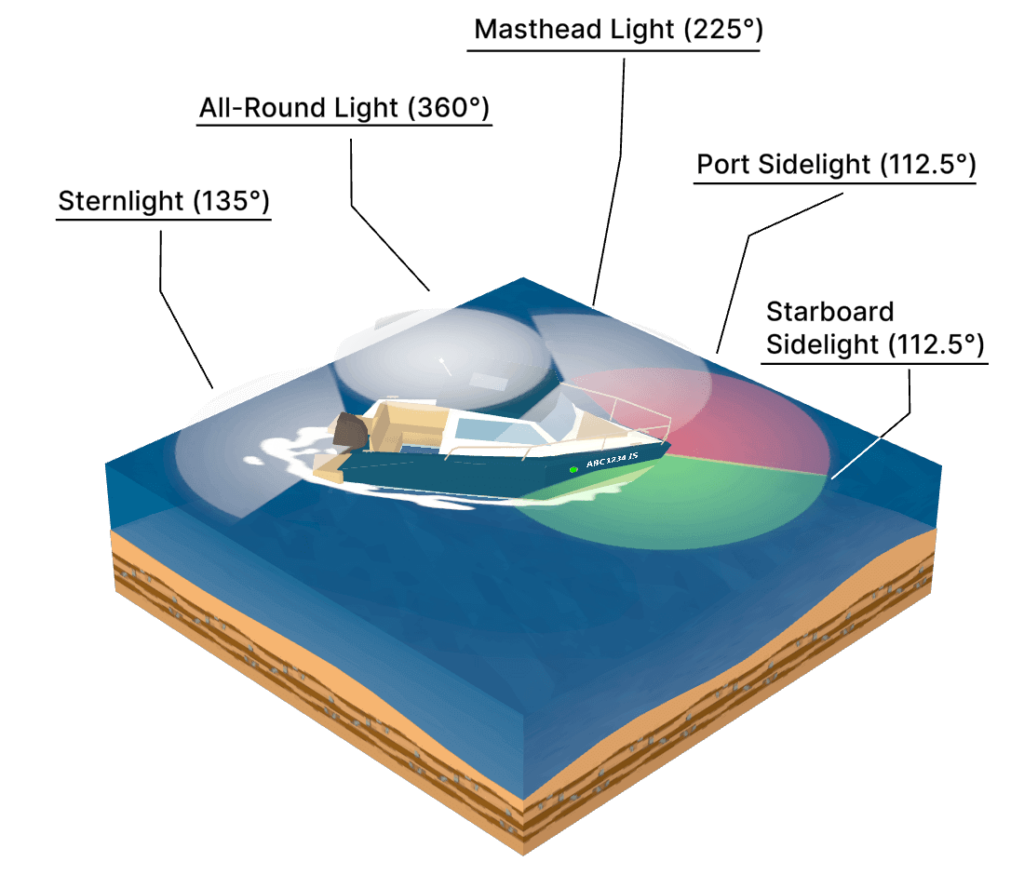
Sidelights Port & Starboard
Are either green or red. Green lights are located on the starboard side and red lights are located on the port side. If we see a GREEN light on a boat, we are looking at its STARBOARD SIDE and it is crossing from left to right. If we see a RED light, we are looking at its PORT SIDE and it is crossing from right to left. If we can see both the RED and GREEN lights, we are looking at the boat’s BOW, and the boat is coming towards us.
Sternlight
Is a white light placed as close as practically possible to the stern. If we can see only the WHITE light on a boat, we are looking at its STERN.
Masthead light
Is a white light found over the fore and aft centerline of a boat. A masthead light covers the same area as both sidelights combined. While there are times when we can see only one sidelight on a boat, the masthead light will be visible anytime either side light is visible.
From sunset to sunrise a motorboat underway shall exhibit a masthead light forward, sidelights and a sternlight.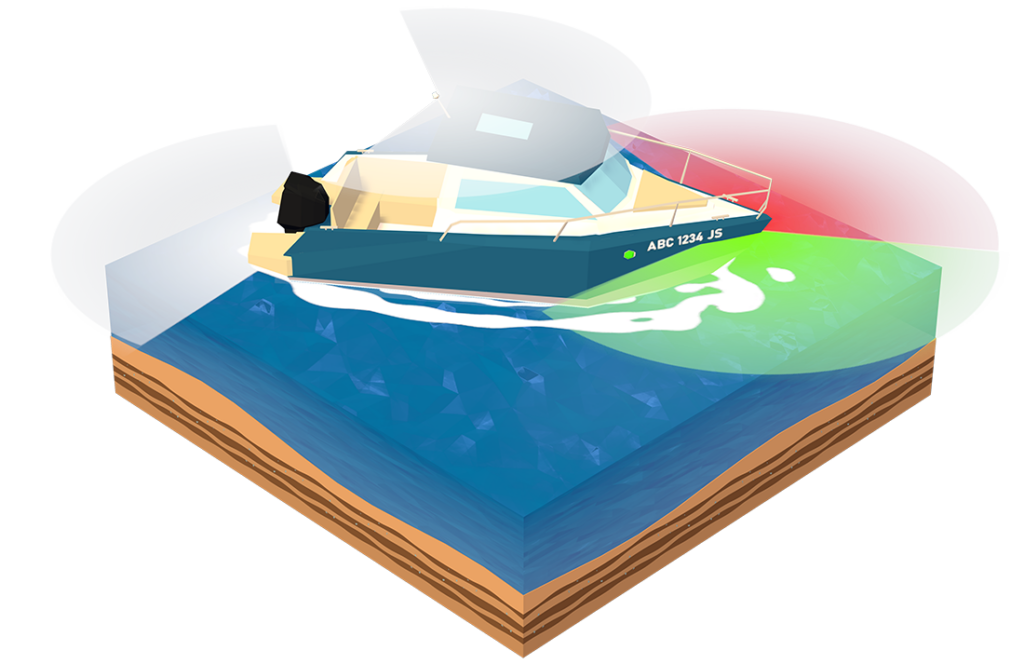
A motor boat less than 12m (40 ft.) in length and underway may exhibit an all-round white light and sidelights instead of a masthead light, sidelights and a sternlight. An all-round light projects an unbroken arc of light of 360 degrees.
From sunset to sunrise, a pleasure craft less than 50m in length and at anchor shall exhibit in its fore part an all-round white light. This light tells others that the boat is there.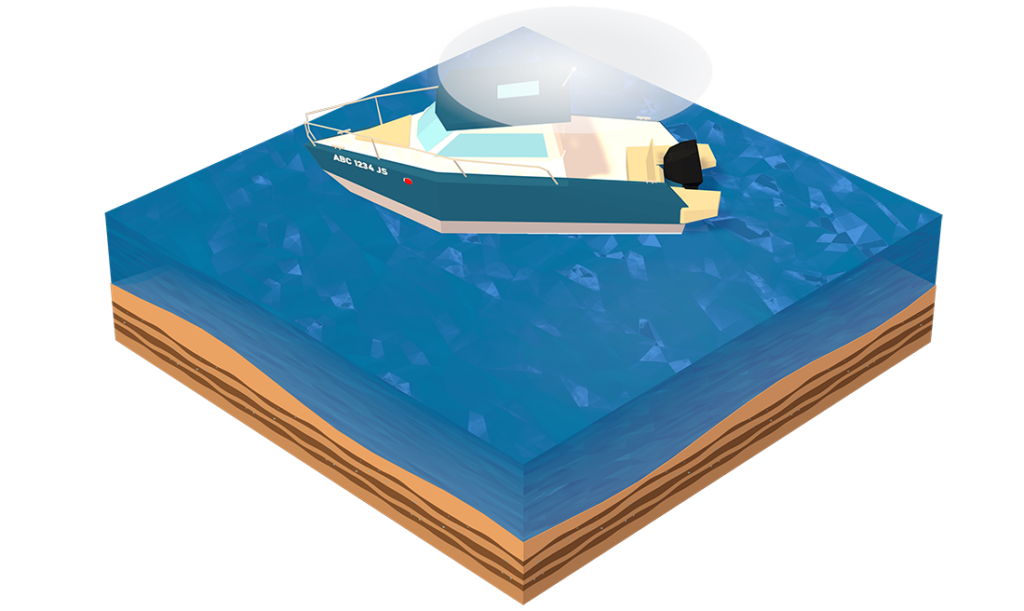
From sunset to sunrise, a pleasure sailboat underway shall exhibit sidelights and a sternlight. If the sailboat is less than 20m (65 ft.) in length and underway, it may exhibit sidelights and a sternlight combined in one lantern instead of separately. This lantern is to be carried at or near the top of the mast as described in the Collision Regulations.
From sunset to sunrise, a sailboat less than 7m (23 ft.) in length and underway shall exhibit, if practical, sidelights and a sternlight. If this is not possible, the operator shall have ready at hand, and must exhibit in sufficient time to prevent a collision, an electric torch (flashlight) or a lighted lantern that projects a white light.
From sunset to sunrise, a pleasure craft under oars may exhibit sidelights and a sternlight. If this is not possible, the operator shall have ready at hand, and must exhibit in sufficient time to prevent a collision, an electric torch or a lighted lantern that projects a white light.
Boaters must also be prepared to recognize other lights on other vessels such as tow lights.
A power driven vessel towing another vessel will exhibit sidelights, a sternlight and a yellow towing light.
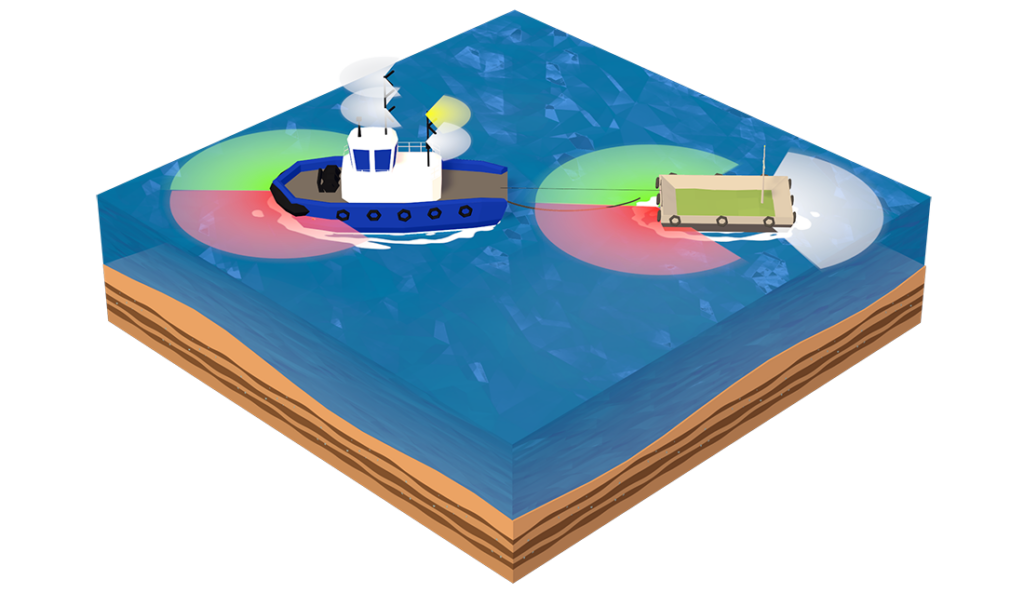
Two masthead lights in a vertical line (three lights if the tow exceeds 200m). A diamond shape where it can best be seen if the tow exceeds 200m.
The towed vessel will exhibit sidelights and a sternlight and a diamond shape where it can best be seen if the tow exceeds 200m.
If it is impractical for the vessel being towed to comply with the lights stated above, it must carry one all-round white light, fore and aft. The tow line may not always be visible so do not pass between the vessels as you may hit the submerged line.
A pushed vessel, if secured to the pushing vessel, will show the lights as if it were one vessel.
In addition to the regular navigation lights, when a vessel not normally engaged in towing operations is engaged in towing another vessel in distress, or otherwise in need of assistance, shall take all possible measures to indicate the nature of the relationship between the towing vessel and the vessel being towed in particular by illuminating the tow line.
A vessel engaged in fishing, other than trawling, shall exhibit:
- two all-round lights in a vertical line, the upper being red and the lower white, or a shape consisting of two cones with their apexes together in a vertical line one above the other; a vessel of less than 20m in length may instead of this shape exhibit a basket.
- when there is outlying gear extending more than 150m horizontally from the vessel, an all-round white light or a cone apex upwards in the direction of the gear.
- when making way through the water, in addition to the lights prescribed in this paragraph, sidelights and a sternlight.
Trawler lights
An all-round white light is added.
If under way, but not making way, add an all-round green light above the all-round light. If making way, add the normal sidelights and sternlight.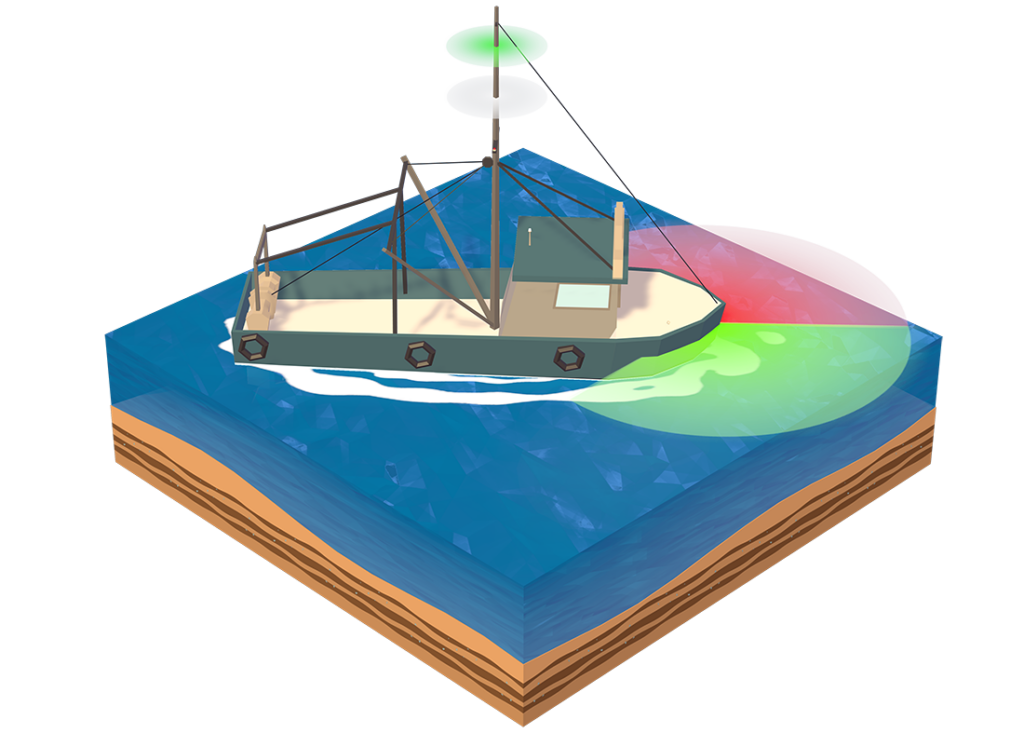
During the day, display the trawler sign which is two cones above each other, the bottom on its base, the top on top, tip of the cones touching each other.
A vessel fishing other than a trawler should use the same lights except the green all round light should be a red all-round light.
If not making way, and the lines extending more than 150m horizontally, it should display the two all-round lights (red above white) or during daylight hours the two reversed cones.
If underway and the lines extending more than 150m horizontally, there should be added the normal running lights (sidelights and a sternlight) plus an extra starboard side all-round white light. During daylight use the reversed cones and add on the starboard side an upright cone.

